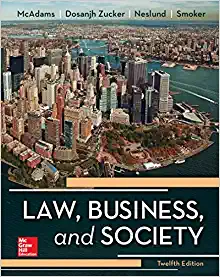Question
Problem 3 Reynolds Corp. factors $400,000 of accounts receivable with Mateer Finance Corporation on a without recourse basis on July 1, 2017. The receivables records
Problem 3
Reynolds Corp. factors $400,000 of accounts receivable with Mateer Finance Corporation on a without recourse basis on July 1, 2017. The receivables records are transferred to Mateer Finance, which will receive the collections. Mateer Finance assesses a finance charge of 1 percent of the amount of accounts receivable and retains an amount equal to 4% of accounts receivable to cover sales discounts, returns, and allowances. The transaction is to be recorded as a sale.
Required:
- Prepare the journal entry on July 1, 2017, for Reynolds Corp. to record the sale of receivables without recourse.
- Prepare the journal entry on July 1, 2017, for Mateer Finance Corporation to record the purchase of receivables without recourseplease think through this.
- Explain the difference between sale of receivables with recourse as oppose to without recourse.
Problem 4
Robinson Corp. makes a loan to Susan Co. and receives in exchange a four-year, $40,000 note bearing interest at 10 percent annually on December 31, 2017. The market rate of interest for note of similar risk is 12 percent. Payment of the note are received at the end of each year starting December 31, 2018.
What is the present value of the note receivable?
Was the note issued (or exchange) for a discount or premium? Support your answer and record the necessary journal entry from Robinson perspective!
Problem 5 Conceptual questions:
- Explain how the accounting for bad debts can be used for earnings management.
- Indicate three reasons why a company might sell its receivables to another company.
- Moon Hardware is planning to factor some of its receivables. The cash received will be used to pay for inventory purchases. The factor has indicated that it will require recourse on the sold receivables. Explain to the controller of Moon Hardware what recourse is and how the recourse will be reflected in Moons financial statements after the sale of the receivables.
- What is the accounts receivable turnover ratio, and what type of information does it provide?
Chapter 8 questions
Problem 1
Yale Department Store maintains separate inventory records for each type of merchandise it sells. The inventory records for product type X show the following for the month of September.
|
|
Units |
Unit Cost | Unit Selling Price |
| Beginning inventory; 9/1 | 200 | $3.00 |
|
| Purchase, 9/8 | 150 | 3.20 |
|
| Sale, 9/13 | 130 |
| $5.00 |
| Purchase, 9/19 | 50 | 3.50 |
|
| Sale, 9/22 | 80 |
| 5.25 |
| Purchase, 9/26 | 100 | 3.55 |
|
| Purchase, 9/29 | 50 | 3.60 |
|
| Sale, 9/30 | 80 |
| 5.50 |
Required
- Assume that Yale uses a perpetual inventory system. Calculate the cost of ending inventory and the cost of goods sold for September under the following inventory valuation methods:
|
| Ending Inventory | Cost of Goods Sold |
| FIFO in dollars NOT units |
|
|
| LIFO in dollars NOT units |
|
|
| Average (moving) Cost in dollars NOT units |
|
|
September was a month of increasing inventory acquisition cost for Yale. Will FIFO or LIFO yield the lower net income under these circumstances? Explain why.
- Given that Yale uses the LIFO method for external reporting, what amount is considered LIFO Reserve if the FIFO method was used for internal purposes for the month of September?
- Assume that Yale has a 40% tax rate. How much tax savings will be generated if Yale uses the LIFO method for inventory valuation?
- Problem 2 conceptual questions
- Identify four methods of assigning cost to ending inventory and cost of goods sold and briefly explain the difference in the methods.
- Its common in the electronics industry for unit costs of raw materials inventories to decline over time. In this environment, explain the difference between LIFO and FIFO, in terms of the effect on income and financial position. Assume that inventory quantities remain the same for the period.
- Describe the ratios used by financial analysts to monitor a companys investment in inventories.
Identify any differences between U.S. GAAP and International Financial Reporting Standards in the methods allowed to value inventory.
Step by Step Solution
There are 3 Steps involved in it
Step: 1

Get Instant Access to Expert-Tailored Solutions
See step-by-step solutions with expert insights and AI powered tools for academic success
Step: 2

Step: 3

Ace Your Homework with AI
Get the answers you need in no time with our AI-driven, step-by-step assistance
Get Started


